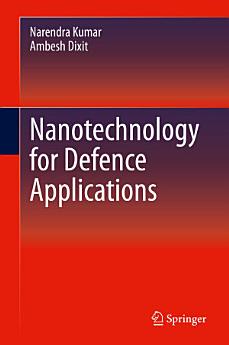Nanotechnology for Defence Applications
អំពីសៀវភៅអេឡិចត្រូនិកនេះ
- Provides comprehensive details on trends in the application of nanotechnology to ground, air, and naval defence systems;
- Examines the application of nanoscience and nanotechnology in military defence strategies;
- Offers pathways and research avenues for development of nanotechnology and materials applications in military capacities.
អំពីអ្នកនិពន្ធ
Dr. Ambesh Dixit received his Ph.D. in 2010 at Wayne State University and is Associate Professor at the Indian Institute of Technology at Jodhpur. He has more than 10 years’ experience in computational and experimental condensed matter physics, with a special emphasis on the design and development of materials for various applications. His research utilizes bulk three, two, one and zero dimensional nanostructured systems to develop unique materials. He is an expert in multifunctionalsystems, and was the first to demonstrate that iron vanadate (FeVO4) is a multiferroic system. He is currently working on the development of materials for strategic military applications, such as microwave absorbing materials for stealth, energy conversion using solar photovoltaic and solar thermal process, and energy storage using electrical and thermal approaches. He has co-edited one book and authored several publications in international journals.




